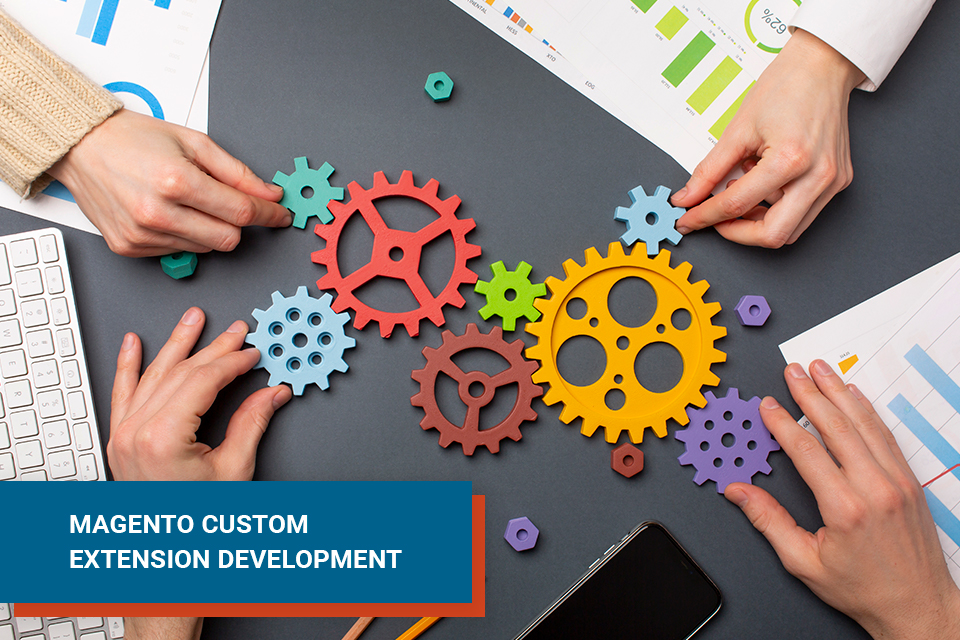Boost Your Magento Performance with These Optimization Tips
 Rachel Nelson
·
4 minute read
Rachel Nelson
·
4 minute read
In this blog post, we will explore various optimization tips and best practices to boost the performance of your Magento eCommerce store. From optimizing your site's speed to improving its search engine visibility, these tips will help you enhance user experience and drive more conversions.

Photo Credit: Adobe Firefly
In today's fast-paced digital landscape, where every second counts and competition is fierce, ensuring that your online store is finely tuned and optimized is paramount to success. In this article, we delve into a range of optimization techniques and best practices tailored specifically for Magento, one of the most popular eCommerce platforms globally.
Whether you're a seasoned Magento merchant looking to fine-tune your store's performance or a newcomer seeking to establish a competitive edge, this guide offers invaluable insights and actionable strategies to elevate your store's performance, enhance user experience and drive more conversions. Follow these strategies to unlock your Magento store's full potential and propel your business to new heights of success.
Optimize Your Magento Store's Speed
One of the key factors in optimizing your Magento eCommerce store's performance is to focus on improving its speed. A slow-loading website can lead to high bounce rates and dissatisfied customers. To optimize your store's speed, you can start by minimizing the number of HTTP requests. This can be achieved by combining multiple CSS and JavaScript files into a single file and using CSS sprites for images.
Another important aspect is to enable caching mechanisms. Caching can significantly improve your website's performance by storing a copy of frequently accessed content. This reduces the load on your server and decreases the time it takes to load pages for returning visitors. You can enable caching in Magento by navigating to System > Cache Management and enabling the desired caching options.
Additionally, optimizing your database can also contribute to improving your store's speed. You can clean up unnecessary data, optimize database tables, and enable database indexing to enhance query performance.
By implementing these speed optimization techniques, you can ensure that your Magento store loads quickly, providing a seamless browsing experience for your customers and increasing the chances of conversions.

Photo Credit: Adobe Firefly
Leverage Caching Mechanisms
Caching can greatly improve the performance of your Magento eCommerce store. By caching frequently accessed content, you can reduce the load on your server and decrease page load times for returning visitors. In Magento, you can enable caching by going to System > Cache Management and enabling the desired caching options.
There are several types of caching mechanisms available in Magento, such as full-page caching, block caching and layout caching. Full-page caching stores complete HTML pages, while block caching caches specific parts of a page. Layout caching, on the other hand, caches the structure of a page. By leveraging these caching mechanisms, you can significantly improve the speed and performance of your Magento store.
It is important to regularly clear and refresh your cache to ensure your customers always see the latest content and updates on your website. You can do this by periodically clearing the cache from the Magento admin panel or by using cache management extensions.
By implementing effective caching mechanisms, you can provide a faster and smoother browsing experience for your customers, ultimately leading to higher customer satisfaction and increased conversions.
Optimize Images and Media Files
Optimizing images and media files is essential for improving the performance of your Magento eCommerce store. Large, unoptimized images can significantly slow down your website's loading speed and negatively impact user experience.
To optimize your images, you can start by resizing them to the appropriate dimensions for your website. This reduces the file size and improves loading times. Additionally, you can compress your images without compromising their quality using image compression tools or plugins. This further reduces the file size and improves loading speeds.
It is also important to choose the right file format for your images. JPEG is generally suitable for photographs and complex images, while PNG is more suitable for images with transparency or simpler graphics. By choosing the appropriate file format, you can further optimize your images and enhance your store's performance.
Furthermore, consider lazy loading your images. Lazy loading delays the loading of images until they are visible on the user's screen. This can greatly improve initial page load times, especially for pages with a large number of images.
By optimizing your images and media files, you can significantly improve your Magento store's performance, ensuring faster loading times and a better customer experience.

Photo Credit: Adobe Firefly
Implement Responsive Design
Implementing responsive design is crucial for optimizing the performance of your Magento eCommerce store. With the increasing use of mobile devices, it is important to ensure that your website is fully responsive and mobile-friendly.
Responsive design allows your website to adapt to different screen sizes and resolutions, providing an optimal viewing experience for users on any device. This not only improves user experience but also positively impacts your store's SEO rankings.
To implement responsive design in Magento, you can choose a responsive theme or customize your existing theme to be responsive. Ensure that your website's layout, images, and content are properly optimized for different devices. Test your website on various devices and screen sizes to ensure that it renders correctly and functions smoothly.
By implementing responsive design, you can cater to the growing number of mobile users and improve the overall performance and accessibility of your Magento store.
Optimize Your Store's SEO
Optimizing your store's SEO is crucial for improving its performance and visibility in search engine results. By implementing effective SEO strategies, you can drive more organic traffic to your Magento eCommerce store and increase the chances of conversions.
Start by conducting keyword research and optimizing your website's content with relevant keywords. Ensure that your product descriptions, category pages and meta tags are optimized for search engines. Use descriptive and keyword-rich URLs for your Magento store's pages.
Additionally, optimize your website's loading speed, as faster websites tend to rank higher in search engine results. Optimize your images, leverage caching mechanisms, and minimize HTTP requests to improve your store's speed.
Implementing a solid internal linking structure and optimizing your website's navigation can also contribute to better SEO performance. Ensure that your URLs are search engine-friendly and use breadcrumbs to enhance user experience and search engine crawlability.
Regularly monitor your website's SEO performance using tools like Google Analytics and Google Search Console. Analyze your website's traffic, rankings, and user behavior to identify areas for improvement and optimize your SEO strategies accordingly.
By optimizing your store's SEO, you can increase its visibility in search engine results, attract more organic traffic, and ultimately drive more conversions for your Magento eCommerce store.

Photo Credit: Adobe Firefly
Magento Optimization Final Thoughts
In conclusion, optimizing your Magento eCommerce store is a multifaceted endeavor that involves enhancing speed, leveraging caching mechanisms, optimizing images and media files, implementing responsive design, and optimizing SEO. By focusing on these key areas, you can significantly improve the performance of your store, provide a seamless browsing experience for your customers and increase the likelihood of conversions.
Each optimization tip mentioned here plays a crucial role in enhancing your store's overall performance. By incorporating these best practices into your Magento store, you can stay ahead of the curve and deliver exceptional experiences that keep customers coming back for more.



